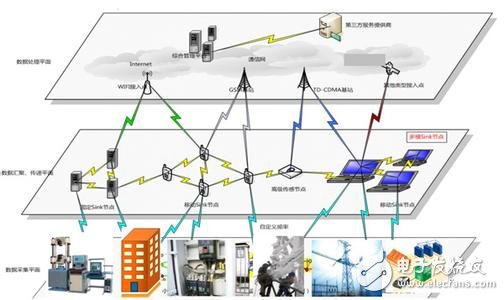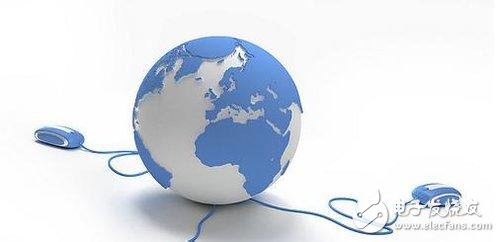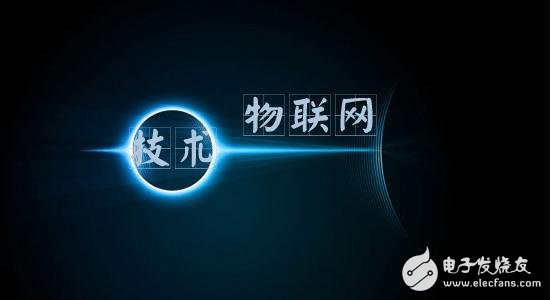At the 2014 Broadband Communication and Internet of Things High-Level Forum, the Ministry of Industry and Telecommunications Research Institute once again released a new white paper on the Internet of Things. Party Meimei, deputy chief engineer of the Institute of Telecommunications Research, Ministry of Industry and Information Technology, explained the white paper in detail.
According to reports, after the country proposed the development of the Internet of Things in 2009, the Ministry of Industry and Telecommunications Research Institute released the first white paper in May 2011, when the institute made a basic focus. In May of this year, the Institute of Telecommunications of the Ministry of Industry and Information Technology completed a new version of the White Paper on the Internet of Things. After three years of development, it has undergone significant changes and has been analyzed from four modules: First, the development of the global Internet of Things has been interpreted, and then The status quo and characteristics of the development of China's Internet of Things are summarized. Third, put forward the key directions and opportunities for the future development of the Internet of Things. Finally, it is a reflection and suggestion on the development of the Internet of Things in our country.
Global Internet of Things Development Status

From a global perspective, at the strategic level, developed countries are good at grasping the opportunities for the development of the Internet of Things. It can be seen that the United States and Germany, mainly from the industrial point of view, reshape the manufacturing advantages and put forward some relevant development strategies, such as the wisdom of the earth concept proposed by the United States in the early years, the manufacturing partner strategic plan in recent years, the German industry 4.0 The idea is to use the Internet of Things to reconstruct the production system and form a good example of the industrial revolution. The EU, South Korea and other countries mainly set up R&D projects from the government level, and set up a series of R&D projects in the EU FPC. In May this year, South Korea established the Internet Innovation Center.
From the application level, the Internet of Things application is developing steadily, and the market-oriented mechanism is gradually forming. It can be summarized into three aspects: M2M has taken the lead in forming a complete industrial chain. By the end of last year, the global M2M number has reached 195 million, and the world has already There are 428 mobile operators providing M2M services, which are the most complete and most standardized applications in all industries, all applications, and then, the Internet of Vehicles is one of the most potential applications in the market. Many countries have developed their own Policies, such as the United States in the future, hope that all low-end models will be connected to the Internet; finally, the global smart grid application has entered a peak.
From a technical perspective, IT and semantics are the hotspots of the entire technical standards. In the early days of Internet development, we may not be able to see the whole situation of development. With the development of these years, we can see that The whole technology system has introduced many elements of the Internet. The trend of IP, Web and semantics is very obvious. The whole technical features can be summarized into six aspects: 1. The IoT architecture remains the focus of international attention and advancement; 2. The situation of coexistence and development of short-distance communication technology in the sensing layer; 3. The pace of IPization of wireless sensor networks is accelerating, which is actually an application of IP in the perception level; 4. The semantics of Internet of Things is defined from the sensor network. Extension to network services and resources; 5. Integration of Internet of Things and mobile Internet in terminals, networks, platforms and architectures; 6. Global Internet of Things standardization is steadily advancing.
From an industrial perspective, the Internet of Things industry has accelerated its development, and the Internet of Things has achieved breakthroughs. From the perspective of the industry chain, many vendors have launched dedicated chips for the Internet of Things, or optimized for specific application scenarios of the Internet of Things. In addition, IoT terminals are constantly evolving, and there are more and more terminals supporting IoT capabilities. At the terminal level, speed is the fastest growing. Open source hardware and open platforms have spawned new models for IoT device development. The open source hardware platform has had a far-reaching impact on the design of the entire hardware level. The platform for open source hardware has greatly shortened the development cycle of IoT products. The previous development is very difficult. Now through open circuit boards and schematics. It is possible to develop new terminals. In addition, the open platform and open source hardware simplifies the overall deployment. It can be seen that the entire open source concept has accelerated the production model of C2B hardware.

From another international trend of the industry, many companies are aiming at the growth opportunities of IoT and begin to realize the movement of the alliance enclosure. The Institute of Telecommunications has summarized a number of current alliances in the white paper. In March of this year, AT&T, Cisco, and General Electric established the Industrial Internet Alliance. In addition, the acquisition and acquisition of the industry is also very hot, Google acquired Nest, fully enter the field of smart home, IT companies have also laid out the field of car networking, our domestic IT companies are also all-round layout of the car network, these large industries in the world The giants are aiming at the opportunity of the entire Internet of Things to develop the future, cross-border cooperation, and build an open ecosystem.
The development status of China's Internet of Things
In view of the status quo and characteristics of the development of China's Internet of Things, the Institute has also analyzed from four aspects:
First, the policy is getting better and better. Since the development of China's Internet of Things in 2009, the top-level design has been intensified since 2012. In August 2012, the Internet of Things Expert Committee was established as a symbol. In the past two years, the government level has promoted the work of many top-level designs: The announcement of the networking guidance was published in the February 2013 issue of the State Council, which promoted the development of the entire Internet of Things; then the expansion of the entire International Joint Conference, including 10 IPO development initiatives issued last September. The plan has promoted the development of the Internet of Things from various aspects; in addition, the Ministry of Industry and Information Technology and the Ministry of Finance continue to promote the work of special funds for the development of the Internet of Things, such as the National IoT Terminal Application Demonstration Project pilot project initiated by the National Development and Reform Commission.
In addition, application development has entered a substantive stage of advancement. The white paper lists examples of many application areas, including industrial, agricultural, transportation, M2M, smart grid, and more. But at the same time, we also see that the current application is still in its infancy, and the joy is that the speed of advancement is more obvious than before. At the same time, the construction of smart cities provides an important carrier for the application of many new-generation information technology industries. The applications of Internet of Things, cloud computing and big data can be found in the construction. The number of smart cities in China is also growing, with more than 300.

From a technical point of view, China actively promotes the research on the independent technical standards and common basic capabilities of the Internet of Things. The Internet of Things architecture is very important for the development of the entire Internet of Things. Domestically, it has been trying to have domestic independent innovation in the design of the Internet of Things.
In the architecture research, the industry has reached a unified consensus that the development of the Internet of Things will draw on the concept of Internet openness, including its operating system and IP system. Therefore, we have also summarized the requirements from the aspects of scalability, general technology, and service guarantee. China's technological innovation is mainly reflected in some breakthroughs in sensor technology, including innovation on RFID and WIA-PA standard for industrial control. China is one of the leading countries in the ITU and ISO counterparts. We also have many leadership positions in the M2M International Organization for Standardization.
From the industrial point of view, China's Internet of Things industry system is relatively complete, and breakthroughs have been made in some areas, and the overall field has maintained rapid growth. At the end of 2013, China's industrial scale reached 500 billion. In the manufacturing process, it achieved partial breakthroughs, such as some RFID technologies and industrial chips. In terms of IoT services, M2M is the highlight of the entire industry. In addition, our country has formed a spatial pattern of four development clusters. However, relative to the international market, we are still in a very weak position.
Win 3 Cap Lamps are produced under IECEX quality control. The lamps are applied with IECEX explosive-proof certificates, build with brilliant electronic design and superior impact resistant, explosion-proof housing material, It is completely static proof and fire resistan.
The high quality LED has a lifespan of more than 30,000 hours and the phosphate technology battery up to 1000 cycles.
Small size and light weight, easy to carry
The highest ingress protection IP 68
Various application: coal miners, tunnel projects, oil fielda , camping, hiking, night fishing, night flying, sailing, etc.
Static Proof Cap Lamp Fire Resistant
Miners Lights For Hard Hats,Underground Mining Lights,Cordless Led Mining Cap Lights,Coal Miners Hard Hat With Light
ZHEJIANG HUACAI OPTIC-TECHNOLOGY CO LTD , https://www.win3safety.com